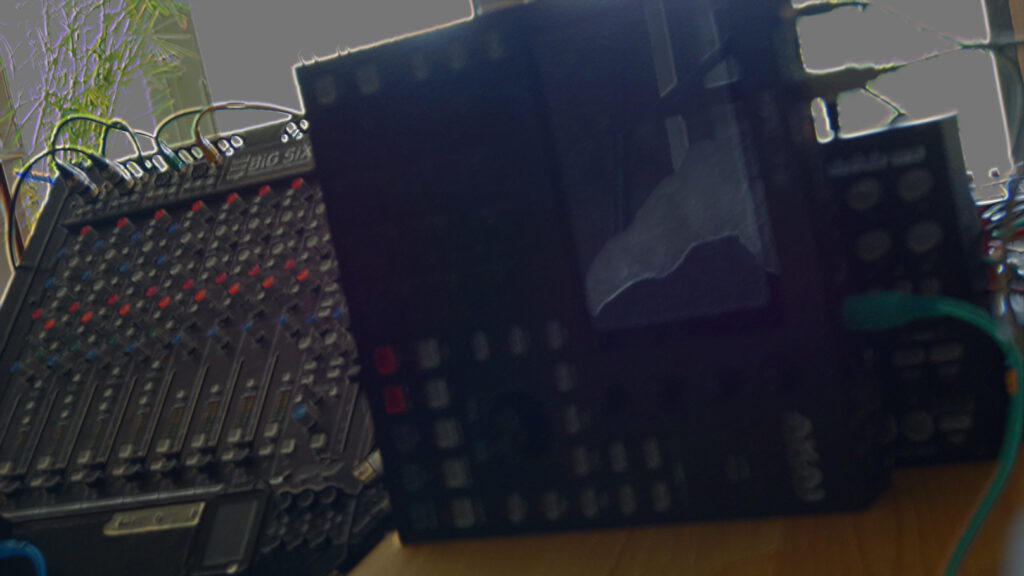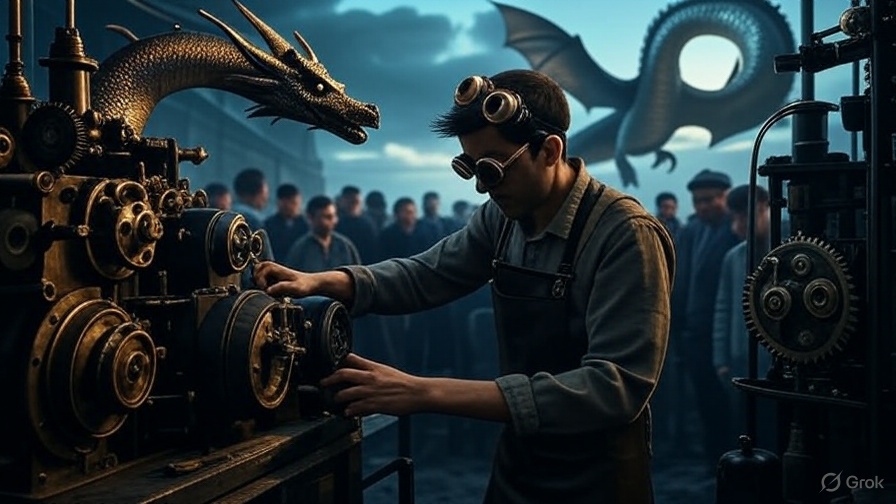The DeepMEE project is my journey into creating ambient dub techno music using only hardware, set in the moody key of F# minor at 113–126 BPM. Inspired by artists like Yagya, Monolake, Basic Channel, DeepChord, and Fluxion, this project was about building a setup that delivers lush, atmospheric sounds and seamless live performances. Here’s a look at how it came together, what I learned, and the music it produced.
What Was DeepMEE All About?
DeepMEE aimed to create a hardware-only music setup that captures the essence of ambient dub techno—think deep basslines, echoing reverb, and hypnotic rhythms. The goal was to make music that feels alive, with smooth transitions between sections and a sound that resonates with the genre’s pioneers. I used gear like the Akai MPC One for sequencing, Elektron Analog Rytm for drums, and Access Virus B for bass and stabs, all wired together to work as one cohesive system.

Building the Sound
The process was hands-on: selecting gear, wiring audio and MIDI, and tweaking sounds to match my vision. I set up the MPC One to control everything, routing bass through a compressor for that signature dub techno “ducking” effect and adding reverb via the Eventide Eclipse for dreamy atmospheres. The setup evolved through stages—planning, testing, and refining—until it was ready for live jams and recordings. I also explored a standalone MC-707 setup (called DeepMC) to see if I could simplify things, while a modular synth idea was shelved as too complex for now.
The Music It Made
The real test was playing and recording. I produced:
- A 36-minute live set, shared on YouTube (August 10, 2025), with an intro, three sections at different tempos, and a proper ending.
- Two shorter recordings shared on my blog: one at 8:56 (July 20, 2025) and another over 20 minutes (August 3, 2025). The shorter one was a bit under my 10-minute goal, but it still captured the vibe I wanted.
These tracks were compared to my inspirations, blending Yagya’s airy textures, Monolake’s crisp rhythms, DeepChord’s warm loops, and Fluxion’s flowing chords. They didn’t quite hit Basic Channel’s stark minimalism, but that gave the music its own personality.
Influences That Shaped the Sound
My setup was inspired by five key artists, each leaving a mark on DeepMEE:
- Yagya (Rigning): Brought airy, reverb-soaked textures. I used the DeepMind 6’s pads and Eclipse’s reverb to create that floating, atmospheric feel, especially in the live set’s quieter moments.
- Monolake (Hongkong): Inspired tight, glitchy drums. The Analog Rytm’s hi-hats and quirky percussion patterns echoed Monolake’s precision, shining in the faster 126 BPM sections.
- Basic Channel (Quadrant Dub I/II): Guided deep basslines. While my Virus B bass patches hit that low-end thud, I leaned toward richer textures over Basic Channel’s minimalism.
- DeepChord (Hash-Bar Loops): Influenced warm, evolving loops. The MPC One’s sampling and Virus B’s stabs captured this hypnotic vibe, especially in the longer blog recording.
- Fluxion (Spaces): Shaped smooth transitions and emotive chords. The live set’s flowing sections, driven by DeepMind 6 pads, owe a lot to Fluxion’s dynamic style.
Challenges Along the Way
Not everything was smooth. I ran into issues like digital noise in the Eventide Eclipse during tempo changes, fixed by tweaking its MIDI settings. A hum in the bass drum channel was solved with a DI box, and I adjusted the bass signal to avoid distortion. Keeping the project organized was another challenge—using a structured workflow and concise planning helped me stay focused without getting overwhelmed.
What I Learned and What’s Next
DeepMEE showed me how powerful hardware can be for creating dub techno, balancing technical precision with creative freedom. The setup is ready for more live sets or studio tracks, though the MPC’s patch-switching could be smoother. For my blog readers, this project is a testament to diving deep into a genre I love, and I’m excited to explore these sounds further—maybe even for an album. Stay tuned for more music!

